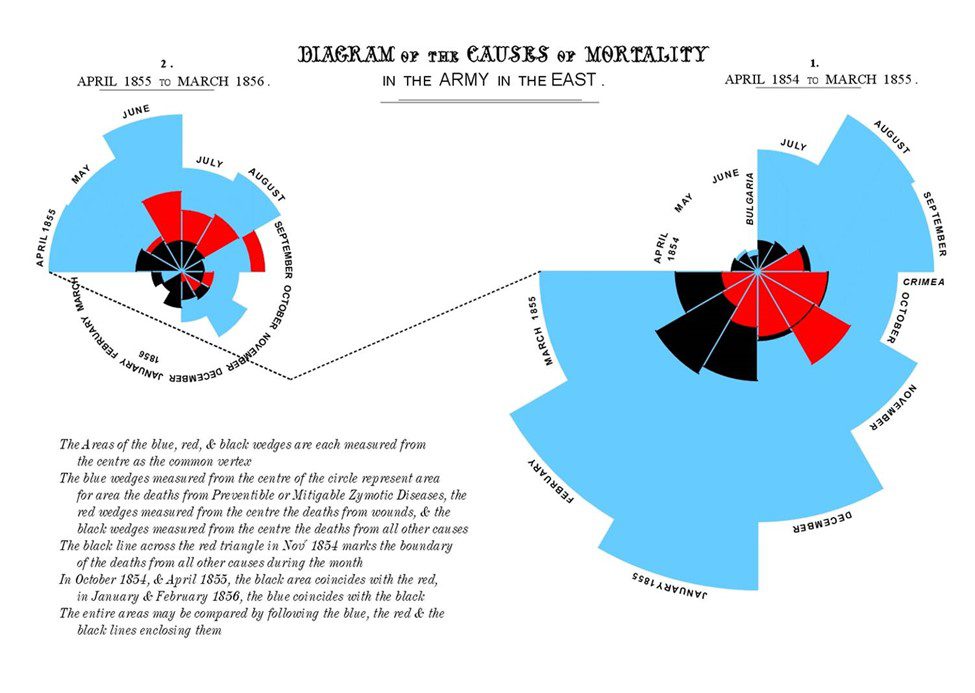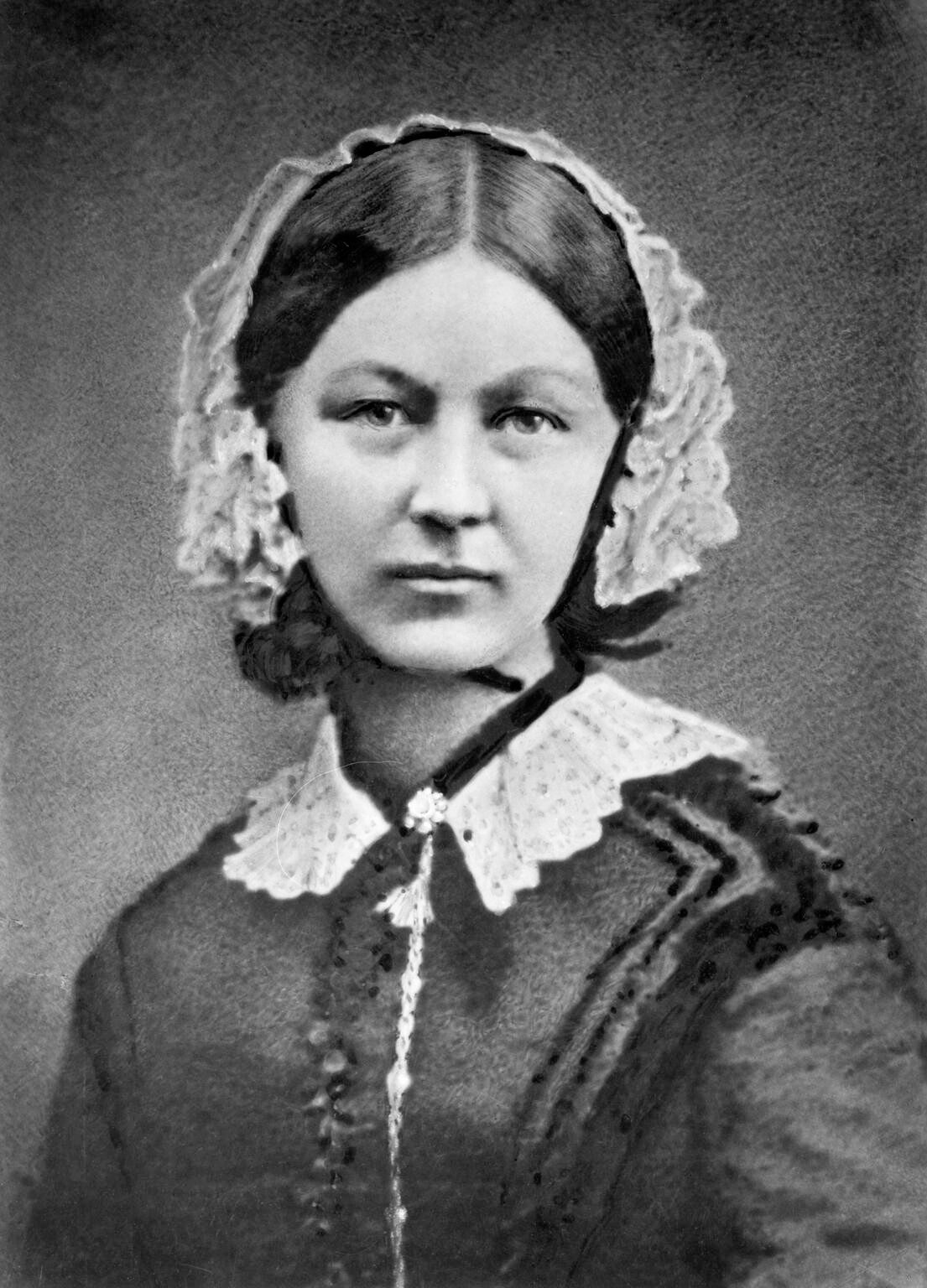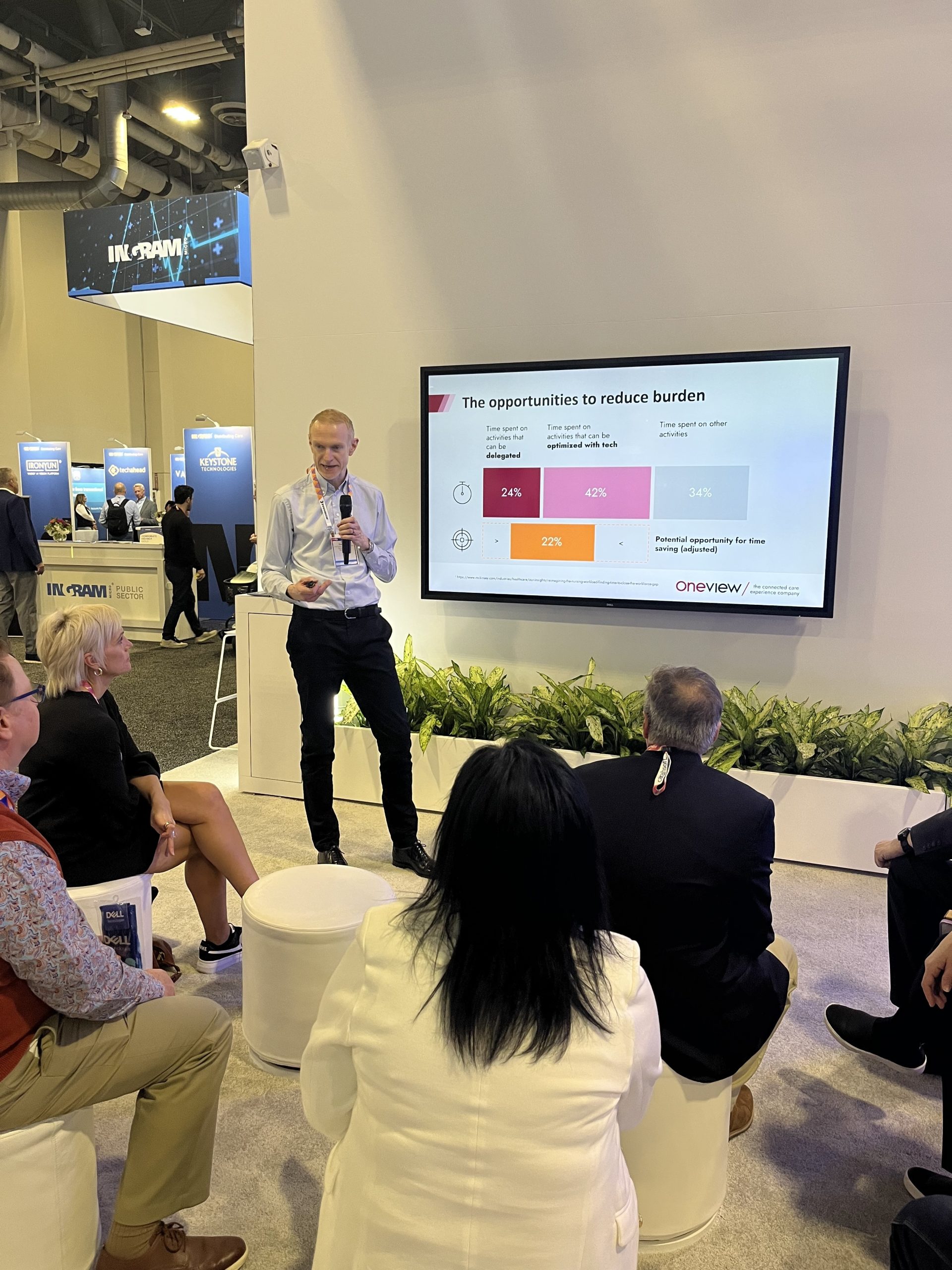“Save a life, you’re a hero. Save a hundred, you’re a Nurse.” – Unknown
Florence Nightingale is world-renowned for pioneering what we know today as professional nursing. Nightingale stepped back from her upper-class British lifestyle in the mid-1800s to work and study in hospitals in Germany, France, and England. She provided medical care to wounded soldiers, disadvantaged women and the poor. Not only did she tend to these patients, but she also used statistics to illustrate how her methods and policies helped saved their lives.
Nightingale’s concept was brilliant in its simplicity; combine her understanding of successful medical procedures with data analysis to visually illustrate the effectiveness of her methods. Using charts and graphs – an alien concept in the art of healthcare – Nightingale transformed the way that patients were cared for in hospitals worldwide.
Yet her genius did not stop there. Through her actions in the field and her ruthless, non-stop patient advocacy, Nightingale turned her population of the sick and infirm into a virtual choir singing her praises and supporting her efforts, much to the chagrin of her male military and hospital leadership.
Yet the deep-seated philosophy of total patient care that Nightingale encouraged was as revolutionary then as it is obvious today. Even now, almost 175 years later, the most trusted medical profession in the world is Nursing. This result is undoubtedly due, in large part, to the concept of total patient care for which Florence Nightingale was so widely recognized.
Traveling The World
Nightingale’s fame grew as she traveled to the front lines of the Crimean war to be the Superintendent of Nurses for the British miliary hospital. When she arrived, Nightingale and her hand-picked staff of 40 nurses found the conditions horribly unsanitary.
With wounded soldiers dying of neglect and infection, rather than the wounds they had incurred during battle, Nightingale and her all-female staff recognized there were MUCH bigger issues that needed to be addressed if medical progress was going to be made. Working tirelessly to increase sanitation in the hospital, nutrition quickly came into focus as a target issue. Moldy bread being eaten by the wounded was replaced by fresher, higher-quality foodstuffs, even as the number of nurses in the hospitals was increased.
Her efforts to care for those in need lowered the military hospital’s death rate by over 95% in less than 30 months. Nightingale’s boundless energy and determination to improve the lot of her charges, oftentimes checking on them late at night by candlelight, also led to her acquisition of the moniker “Lady with the lamp.”
Using Visual Aids
While well-known, it’s not universally recognized that Florence Nightingale invented the polar area diagram – a circular histogram which she used to show the deaths of soldiers in the Crimean war that were due to preventable diseases and infections versus those that died due to their wounds.

Known as the Nightingale Rose Diagram, this creation showcased how her work to improve the sanitary conditions of the hospital greatly reduced the number of preventable deaths. Her use of statistical analysis and visual representation of the data ensured others could understand and build on the impacts of her work and methods.
Today, Florence Nightingale’s name is synonymous with tireless nursing work and her brilliant application of statistics. Her methods, strategies, beliefs, and attitudes saved the lives of thousands at the time, and has arguably been responsible for better living conditions for billions of people since.
Nightingale’s approach and training techniques laid the groundwork for the types of transformational care we enjoy in today’s hospitals. Oneview Healthcare is honored to work with Nurses every day, and we celebrate the philosophy of total patient care and data analysis to the forefront of the patient experience through our Care Experience Platform.
For more information, please contact Oneview at info@oneviewhealthcare.com or at OneviewHealthcare.com.
Sources:
Gallup: Nurses are Most Trusted Profession for 20th Straight Year. (2022, February 7). Yale School of Nursing. Retrieved August 9, 2022, from https://nursing.yale.edu/news/gallup-nurses-are-most-trusted-profession-20th-straight-year#:%7E:text=According%20to%20the%20latest%20annual,%2C%20pharmacists%2C%20and%20military%20officers.
Hammer, J. (2020, March). The Defiance of Florence Nightingale. Smithsonian Magazine. Retrieved August 9, 2022, from https://www.smithsonianmag.com/history/the-worlds-most-famous-nurse-florence-nightingale-180974155/
History.com Editors. (2022, March 8). Florence Nightingale. HISTORY. Retrieved August 9, 2022, from https://www.history.com/topics/womens-history/florence-nightingale-1
Wikipedia contributors. (2022, July 29). Florence Nightingale. Wikipedia. Retrieved August 9, 2022, from https://en.wikipedia.org/wiki/Florence_Nightingale



